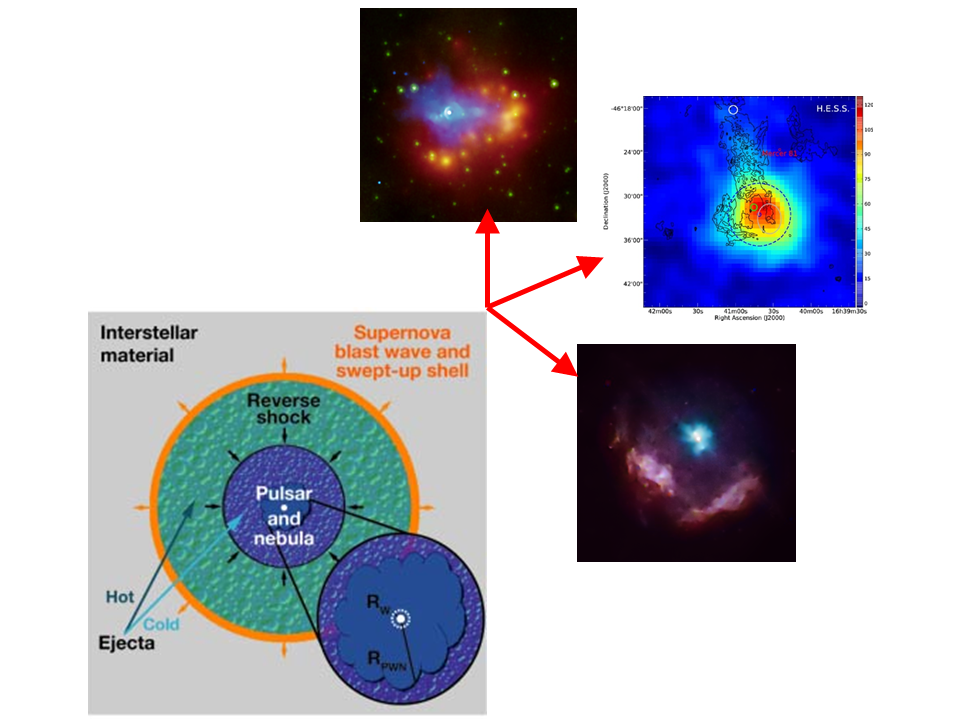Daily Image
26-02-2015Today's colloquium: Investigating high energy particle acceleration and neutron star formation using pulsar wind nebulae
| Submitter: | Joseph Gelfand (NYU Abu Dhabi) |
| Description: | The bulk of a neutron star's rotational energy is believed to power an ultra-relativistic outflow, called a pulsar wind, which creates a pulsar wind nebula (PWN) when it expands into its surroundings that, when the neutron star is young, is located within the supernova remnant (SNR) created by the progenitor explosion (see the cartoon above). In this case, the evolution of the PWN is sensitive to that of the evolution of both the neutron star and supernova ejecta. Additionally, the association of many Galactic gamma-ray sources with young pulsars strongly suggests that particles are accelerated to extremely high energy in these sources. In this talk, I will demonstrate that one can use the properties of a PWN inside a SNR to measure the initial properties of both the pulsar and supernova ejecta, as well as the spectrum of particles accelerated inside the PWN, and I will discuss the implications of these results on models for the formation of neutron stars and high-energy cosmic ray electrons. The pictures above show examples of PWNe in SNRs: Upper: A composite image of SNR G54.1+0.3: the white source near the centre is pulsar J1930+1852, the Chandra X-ray image of the PWN is shown in blue, and the Spitzer infrared images of the gas and dust that condensed out of the SNR are shown in yellow and red. Images courtesy of: X-ray: NASA/CXC/SAO/T.Temim et al.; IR: NASA/JPL-Caltech. Middle: A gamma ray map of the very high energy gamma-ray source HESS J1640-465 region, which is positionally coincident with the SNR G338.3-0.0. The dashed circle marks the position and extension of HESS J1640-465, the 610 MHz radio contours are shown in black (Castelletti et al. 2011), and the green circle indicates the position of the candidate PWN XMMU J164045.4-463131. Image courtesy of: H.E.S.S. Collaboration/A.Abramowski et al. Lower: A deep Chandra X-ray image of the SNR Kes 75 (shown in red shades to identify the low-energy emission), with the pulsar J1846-0258 (the bright spot near the center of the image) and the PWN (shown in blue shades to identify the high-energy emission). Images courtesy of: NASA/CXC/GSFC/F.P.Gavriil et al. |
| Copyright: | JG |
| Tweet |  |
